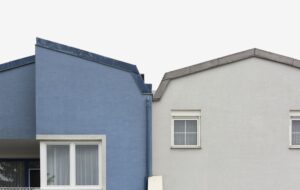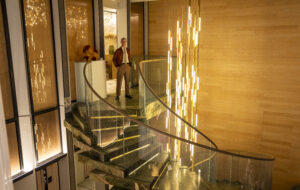|
|
||
|
Part of Jean-Louis Cohen’s strength as a thinker is the way he traces the transfer of architectural ideas rather than simple aesthetics. He explains how architectural typologies have evolved in both a general and detailed way, and it is this that makes him the best architectural historian writing today. Woven through this grander text on the avant-garde in architecture throughout the 20th century are fascinating small narratives. These include the influence of 19th-century French philosopher Charles Fourier’s utopian phalanstère communities on the constructivists’ social condenser. He scotches the naive assumption that the facade, the external view of the building, is a page upon which to read the thoughts of the society that produces it. Architecture is more complicated than that. Yet this doesn’t mean the historian should shrink from exploring the reality of architecture’s multiple relationships with society. Cohen is most adept at explaining how architectural ideas are conceived through buildings. He is strong too, in a way that most academics are not, on the processes of construction – while still reconciling this industrial process to the way in which a drawing style can convey a desired atmosphere in a future building. He identifies, for example, the key impact of the exhibition Les Architectes du Groupe de Stijl at the Galerie de l’Effort Moderne in Paris in 1923. “The models offered as synthetic a representation of three dimensional space as the axonometrics drawn by August Choisy in his 1899 Histoire de l’Architecture,” he writes, identifying the slow means by which a different manner of perceiving architecture filters into the actual practice of it. Cohen is more revealing in these small stories than he is on the grander narrative, because generally he is happy to follow Reyner Banham’s path into the 20th century – acknowledging the work of Auguste Perret as key in the founding of modernism, moving from France to the Netherlands and on to Germany. Perhaps Cohen places more emphasis on the technical story of concrete’s evolution, and therefore raises the importance of engineers and bridge builders, and he also has a chapter on the Russians, where Banham has none, which serves to diminish slightly the importance of the Bauhaus. He is most at home during the most tumultuous moments of the last century. His own interests come into play not in the dissemination of modernism from Europe to North America, but more interestingly to South America and North Africa. This, of course, is not in any kind of reductive neo-colonialist way, but often in parallel to forced migration and the irresistible transfer of design solutions in a manner that would now probably be described as a meme, but used to be called an idea. In this area, his appreciation of the accumulated study of masterplanning and its relationship to architecture comes to the fore. He has explored how segregation policies were enacted in the planning of modern Casablanca in an earlier work, Colonial Myths and Ventures. Here however he incorporates into his text narratives of Africa and South America that have until now been kept outside the canon, or been used to show that modernism is incapable of sticking to its strictures, rather than as an example of how ideas travel and adapt. The one tension in this book is that Cohen is kept to a history which involves key buildings. Even a big architecture book published by Phaidon but written by Jean-Louis Cohen is still a big architecture book published by Phaidon. The effect of using different visual material, drawings, sketches and the like does give one a sense of the transfer of information rather than the endless repetition of architectural spectacle that such books can turn into. Yet, as brilliant as this book is in places, one would still like to read the book that Cohen clearly wants to write about how architectural ideas are transferred, not just through grand projects, but through a process of evolution and filtering down into everyday delivery. The Future of Architecture. Since 1889. By Jean-Louis Cohen. Phaidon £45. |
Image Phaidon
Words Tim Abrahams |
|
|
||


















